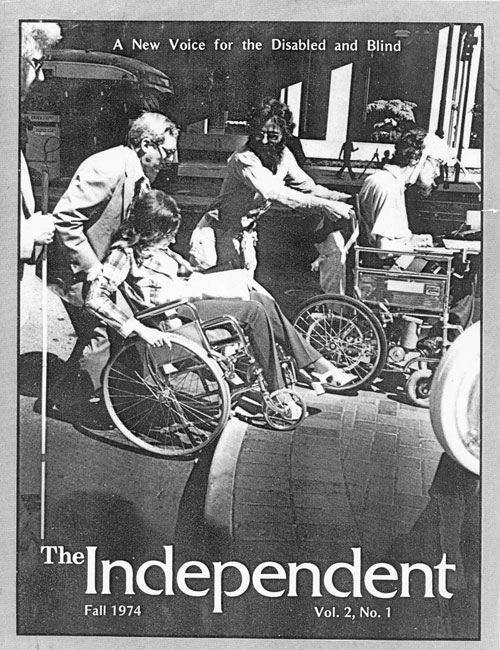This cover photo was chosen for the Fall 1974 issue of the CIL’s quarterly magazine, The Independent. It features Eric Dibner and Hale Zukas (first and second from the right) with Kitty Cone and an unidentified attendant celebrating the fruits of their labor by rolling over one of Berkeley’s official curb ramps on Telegraph Ave. Kitty was a formidable disability rights activist who worked tirelessly on transportation and access issues with Hale throughout the decade.
In 1973, the department of Public Works agreed to install 125 new ramps based on the input from the CIL and Berkeley’s physically disabled community. It was a major victory for people using wheel or powerchairs and enhanced their mobility options significantly. Before curb cuts, wheelchair users had to plan their routes around various sloping driveways and had to pull themselves up over a curb, which was not 100% successful. Installing curb cuts and curb ramps meant greater independence for anyone requiring a mobility device and increased their visibility in public space. After decades of forced sequestration, the act of being seen in public was a radical act for people with disabilities.
